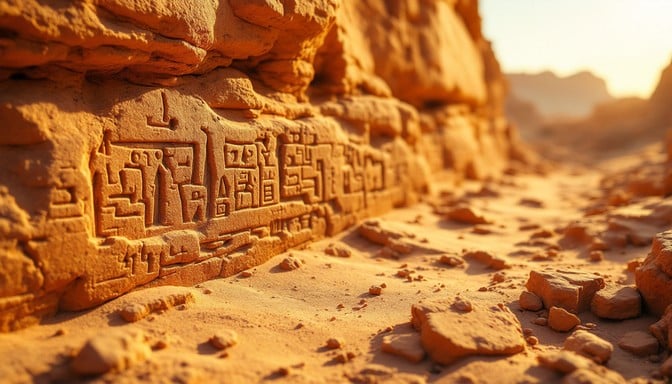The Orontius Finaeus Map: Did Ancient Cartographers Know Antarctica?
Oronce Finé — also known as Oronteus Fineus or Orontius Finaeus — was a French mathematician, cartographer, and Royal Astronomer who left behind some of the most enigmatic maps of the Renaissance. Among them, his 1531 heart-shaped projection map has fueled centuries of debate. Could Finé’s maps reveal knowledge of Antarctica long before its official discovery?
Oronce Finé: Scholar and Innovator
Born in 1494, Finé was not only a mathematician but also one of the first French scholars to delve into cartography. His maps, based on geometric studies and cordiform (heart-shaped) projections, sought to capture the Earth’s curvature with scientific precision. As Royal Mathematician, he introduced novel approaches to mapping and astronomy, leaving an enduring impact on the Renaissance scientific world.
The 1531 Heart-Shaped Projection
Finé’s most famous map employed a “heart-shaped projection” — an innovative way to balance the Earth’s surface on a curved design. Supporters of the theory claim that this map accurately places regions of Antarctica, such as Queen Maud Land, Wilkes Land, and Marie Byrd Land, centuries before their discovery. If correct, this would suggest an extraordinary level of geographical knowledge far beyond what was believed possible in the early 16th century.
Discovery in the Library of Congress
The Orontius Finaeus Map resurfaced in 1960, discovered by historian Charles Hapgood in the Library of Congress. Hapgood and later authors such as Zecharia Sitchin and Graham Hancock argued that the map may have been copied from much older, pre-Ice Age sources created by a forgotten civilization. Some even speculated that the landmass shown was not Antarctica but the legendary continent of Atlantis.
An Ice-Free Antarctica?
Perhaps the most controversial aspect of the map is its apparent depiction of Antarctica’s coastline free of ice. Modern seismic studies, like those conducted by Dr. Richard Strachan of MIT, have suggested similarities between Finé’s map and today’s subglacial surveys. Meanwhile, core samples reveal that parts of the Ross Sea may indeed have been ice-free around 4000 years ago — aligning with what the map portrays.
Mystery or Misinterpretation?
Skeptics argue that Finé’s “Terra Australis” may simply have been Tierra del Fuego or another southern extension of known landmasses. Yet, the striking resemblance to Antarctica continues to spark debate. Was Finé’s map a product of Renaissance imagination, or a window into a body of knowledge inherited from an earlier, advanced civilization?
Whatever the truth, the Orontius Finaeus Map remains a captivating artifact — bridging science, mystery, and speculation about the ancient world.
Related Articles on Ancient360
-
Cart Ruts and Forgotten Civilizations: Traces of Cataclysmic History
-
The Cart Ruts of Syracuse: Ancient Tracks of Forgotten Civilizations
-
Cart Ruts in the USA: Ancient Tracks from Texas to California

References
______________________________________________________________________________________
- Cuochi, Diego “The Charter of Orontious Finaeus (Oronce Fine)” https://www.diegocuoghi.com/Piri_Reis/Finaeus.htm
- Frank J. Swetz (The Pennsylvania State University), Mathematical Treasure: Oronce Fine’s 1534 World Map https://www.maa.org/press/periodicals/convergence/mathematical-treasure-oronce-fine-s-1534-world-map
- Keith Fitzpatrick-Matthews, The Orontius Finaeus Map http://www.badarchaeology.com/old-maps/the-orontius-finaeus-map/
- Oronce Finé, Wikipedia, https://en.wikipedia.org/wiki/Oronce_Fin%C3%A9
- The TalkOrigin Archive, The Oronteus Finaeus Map of 1532, Heinrich Paul, 1996, https://www.talkorigins.org/faqs/mom/oronteus.html
- Library of Congress, control number: 2021668428 www.loc.gov/
- Hancock, Graham, 1995, Fingerprints of the Gods. Crown Publishers, Inc., New York.
- Lionel and Patricia Fanthorpe, 1997, The World’s Greatest Unsolved Mysteries
- Peter James and Nick Thorpe, 1999, Ancient Mysteries Discover the Latest Intriguing Scientifically Sound Explanations To Age-Old Puzzles
- Hapgood, C.H., 1966, Maps of the Ancient Sea Kings: Evidence of Advanced Civilization in the Ice Age, 1st Edition
- Hapgood, C. H., 1979, Maps of the Ancient Sea Kings, 2nd Edition, E. P. Dutton, New York.
- Lunde, P., The Oronteus Finaeus Map. Aramco World Magazine, Jan-Feb 1980. (accessible from http://www.millersv.edu/~columbus/h-l.html, under LUNDE02 ART)





